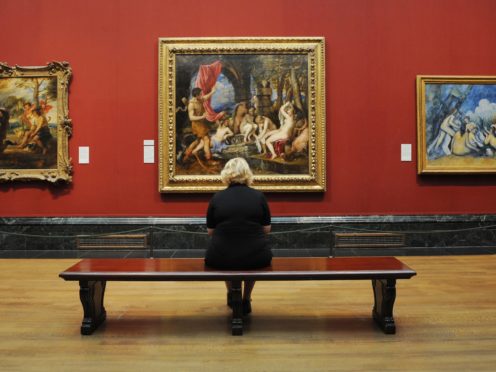New protections aimed at stopping some of the UK’s most important artworks and artefacts being sold to overseas buyers have been outlined by the Government.
The proposals, set out in a public consultation, would strengthen export deferral rules and give UK museums and buyers a better chance of acquiring items considered to be national treasures.
The measures would bring-in a formal, legally binding agreement with private sellers to replace the current ‘gentleman’s agreement’ system, the Government said.
Under the current rules, which have stood for 65 years, if a UK buyer puts in a matching offer on a national treasure set for export then they are given first refusal and time to raise the funds.
NEWS: Plans to strengthen protections for Britain's most valuable treasures at risk of export https://t.co/KhmWmQ1AqR pic.twitter.com/nmSSWfpYLF
— DCMS (@DCMS) December 15, 2018
However, it is down to the seller to honour the commitment.
The Government wants to introduce a mechanism to ensure that owners are legally bound to honour their commitment of accepting a matching offer from a UK buyer in order to remove the risk of reneging on the sale.
UK museums and buyers would also get first refusal on acquisitions.
Michael Ellis, Minister for Arts, Heritage and Tourism, said: “Over the past 65 years our export bar system has saved hundreds of our most valuable cultural objects for the benefit of the nation.
“However, with many exceptional items increasing dramatically in value in recent years, it is right that we strengthen this process.
“These plans would protect museums that fundraise in good faith, and help to keep national treasures in the UK where they can be seen and enjoyed by the public.”
We are delighted to announce the acquisition of Queen Victoria’s stunning sapphire and diamond coronet designed by Prince Albert in 1840. pic.twitter.com/lBEBEDVnfL
— V&A (@V_and_A) August 27, 2017
Between 2007-2017, 40% of items at risk of export, worth a total of £97 million, were saved by UK museums and galleries.
However, the remaining 60% of such items, worth £578.5 million, ended-up overseas.
Items saved from export include a gold ring owned by Jane Austen, which was acquired by Jane Austen’s House Museum, and a steel dagger and scabbard owned by TE Lawrence which was bought by The National Army Museum.
A sapphire and diamond coronet designed by Prince Albert in the year of his wedding to Queen Victoria, which she wore after his death, was acquired by the Victoria and Albert Museum (V&A) in August 2017 for £5 million.
Items that are being sold abroad are assessed when the seller applies for an export license. A committee decides whether the object ought to be regarded as a national treasure, if it is of “outstanding aesthetic importance” or whether it is of academic importance.
A public consultation on the proposals will run until February 24.
